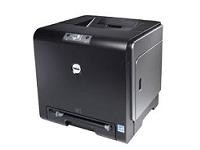This article aims to offer advice and useful tips that we have come across over the years. This document assumes that the users connecting to the Terminal Server will be on a different network to the client computers and that you have some understanding of Terminal Services and printing in general.
Terminal Server Printing Methods
There are 3 methods of setting up a Terminal Server for printing: built in printer driver, installing printer drivers and using third party tools.
Built in Printer Driver: Microsoft Windows server 2008 included a built in terminal services printer driver called Easy Print; the idea being that it should work with most printers. With this technology all you would need to do is configure the RDP client to enable printer mapping. Easy Print is better then it’s predecessors but with so many printer companies out there with all their different drivers it is by no means a guaranteed method of printing. It does however offer printing compression from the terminal server to the client machine allowing for faster printing to the remote printer.
Installing Printer Drivers: Within Microsoft Windows server 2008 you can install printer drivers directly upon the server but make sure that you install the drivers within ‘Server Properties’ under ‘Printer’. Also make sure you install only the driver software and not all the other features that come with the printer. Installing non-essential software can affect the stability and usability of the Terminal Server. With Microsoft Windows server 2008 you will need to set a computer policy to search for installed printer driver 1st and use the built in driver second. This method is not idea as after a while you will get a number of various printer drivers installed which can affect performance of the server. This type of printing is the least bandwidth efficient method of printing as the print job will be sent uncompressed from the terminal server to the remote printer.
Third Party Tools: This method completely removes the built in options of the server and removes the need to enable printer mapping within RDP. In most cases there will be two pierces of software you will need to install and configure; one for the server and one for the client, you will also need to apply a group policy to disable the Easy Print driver. Third party solutions tend to use very efficient compression, making it the fastest solution for sending print jobs from the terminal server to the remote printer.
There are many different tools available but the most effective we have used is Screwdriver made by Tricerat which works with 95% of the printers we have come across. If you have found any better tools we would love to know about them so please feel free to let us know: blog@virtualtin.com
Local Network
The best way to deploy printers upon a local network for Terminal Services is via a direct connection. E.g. If you have five pc’s and one network printer each PC connects directly to the printer via the IP address (no printer server). The reason behind this is because some printer drivers have trouble relaying print jobs through to a print server.
Top tips
- Avoid home Multi-Function, these printers have been designed to work with home computers with a direct connection to the printer.
-
Make sure all PC’s are using the same printer driver and version.
-
Regardless of the printing method you use you may find that on occasion some PDF documents will print in gibberish. To get around the problem you can print the PDF document as an image; when you select to print the document you will see an ‘Advanced’ button (Not Printer Properties) click ‘Advanced’ and then select the option ‘Print as Image’ and print as normal.
-
Upon the Terminal server you may want to disable printer logging for the event log otherwise your event log will get allot of entries of little value. This can be done by going to the printers window and selecting server properties from the menu, then selecting the advanced tab.








